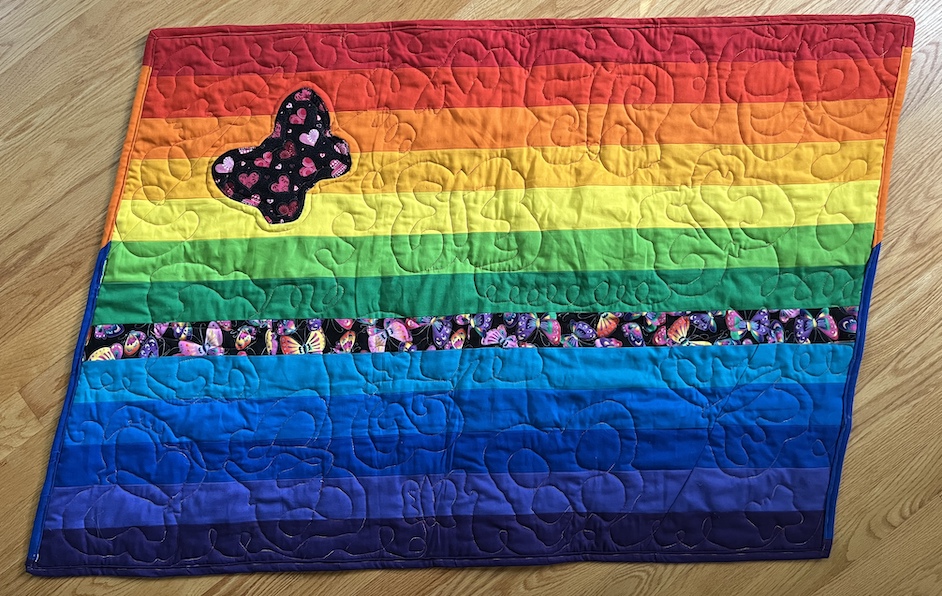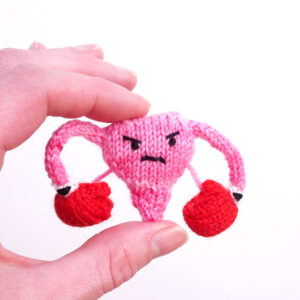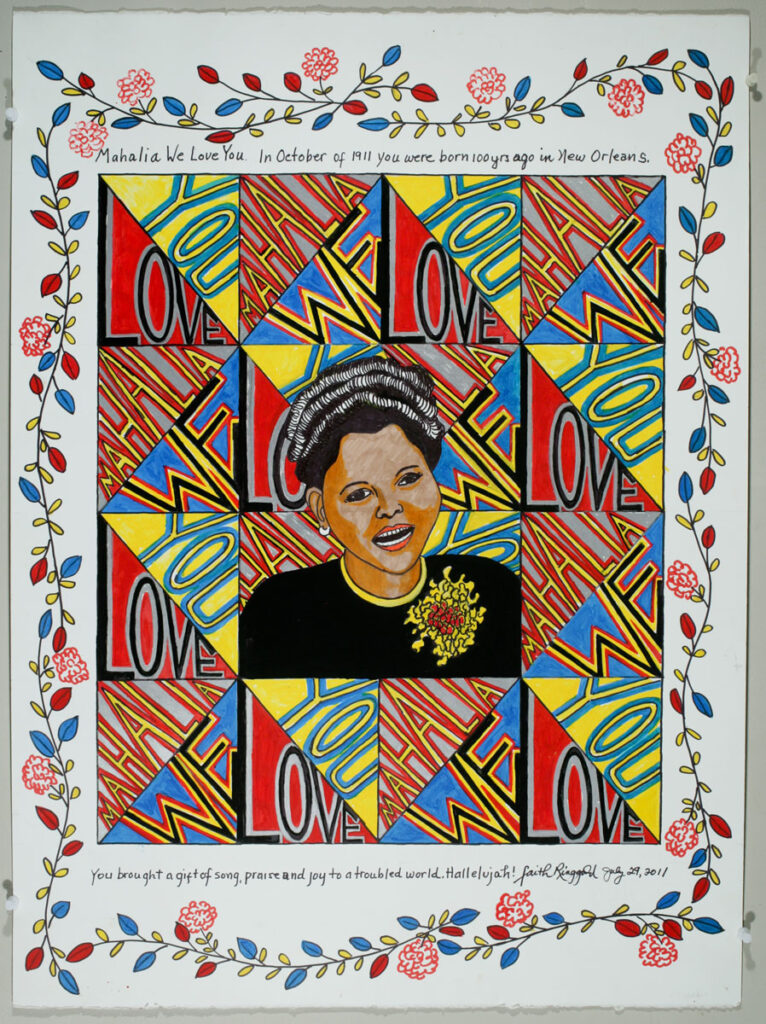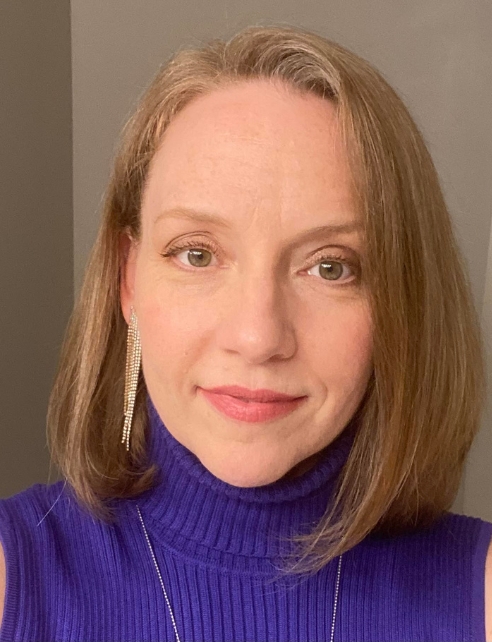Essays and Thoughts
Rainbow Flags and Story Quilts: Textile Art as Activism in U.S. History

It’s Pride Month, and rainbow flags are everywhere. If you’ve never considered the connection between textile art and activism, you’re in for a colorful history lesson. In fact, the United States has a rich history of weaving crafts such as sewing, knitting, and other fiber arts into its social justice movements.
Read on to learn more about “craftivism,” see examples of textile art as activism, and even find out how to create your own.
The History of Pride and the Rainbow Flag
While you may have heard the term “pride” or “Pride Month,” you may be wondering exactly what is Pride Month and how did it start? According to the Library of Congress, “Lesbian, Gay, Bisexual, Transgender and Queer (LGBTQ) Pride Month is currently celebrated each year in the month of June to honor the 1969 Stonewall Uprising in Manhattan … a tipping point for the Gay Liberation Movement in the United States.”
The purpose of Pride Month is to recognize the impact that LGBTQ individuals have had on history. Today, pride celebrations include parades, concerts, and workshops and attract millions of participants around the world.
Gilbert Baker designed the original rainbow flag for the San Francisco Gay and Lesbian Freedom Day Parade in June 1978.
So how did the rainbow flag become a symbol of pride? According to the Museum of Modern Art (MoMA), the flag’s designer, Gilbert Baker, and a group of volunteers hand-dyed and stitched rainbow flags for the San Francisco Gay and Lesbian Freedom Day Parade on June 25, 1978.
Two of these pride flags were later hung in the city’s United Nations Plaza “to highlight the acceptance and equality of sexual and gender minorities as both a global struggle and a matter of civil rights,” states MoMA’s website. The contemporary, mass-produced version of the rainbow flag is part of the Manhattan museum’s collection.

A CourseStorm employee and new mom received this handmade pride baby quilt by Mittie Theobald Quinn.
The Rise of ‘Craftivism’
The rainbow pride flag is not the first example of textile art as activism. In fact, the history of crafts and textiles in social justice goes all the way back to the American Revolution, when banners and sashes played a central role in the Women’s Suffrage Movement. This fascinating history was explored in an exhibit at the Rochester Institute of Technology called, “Crafting Democracy: Fiber Arts and Activism.”
The history of textiles in social justice movements dates back to the American Revolution, when banners and sashes played a key role in women’s suffrage.
The exhibit documented the rise of “craftivism,” i.e., using craft as a form of activism. One of the highlights of the exhibit was the display of hand-knitted “pussyhats, symbols of solidarity in support of women’s equality and reproductive rights. These hats were a significant part of the Women’s March on Washington in January 2017, a powerful protest that reverberated worldwide,” stated the exhibition catalog.
The Women’s Museum of California in San Diego is hosting a similar exhibit, titled “Crafting Feminism: Textiles of the Women’s Movement.” Visitors can register for interactive educational workshops based on the exhibit.

Fumin’ Womb designed by knitter Anna Hrachovec.
If you’d like to try your hand at craftivism at home, one option is the Fumin’ Womb, an original design by Chicago-based knitter Anna Hrachovec. “When Roe v. Wade was overturned, many of us felt it as a gut punch. But there are also many ways to punch back and join the fight for bodily autonomy,” she wrote in Knitty, where she published the pattern for a tiny angry uterus that can be worn as a pin or brooch. Hrachovec donates half the proceeds from sales of her Fumin’ Womb kit to reproductive rights funds.
Quilting to Record Black Stories
No discussion of textile art and activism would be complete without mentioning Faith Ringgold, a prolific and critically acclaimed artist best known for her “story quilts.” Raised by a seamstress in Harlem during the Great Depression, Ringgold crafted intricate quilts depicting scenes from Black history and her own life with stories written around the edges. Many of them were later turned into children’s books. Ringgold has been active in the gender and racial equality movements throughout her career.
American artist Faith Ringgold is known for her “story quilts,” many based on themes of gender and racial equality.
Now 92 and still making art, her work was featured in a major retrospective at the New Museum in New York last year. Learn more about Ringgold’s life and work in this PBS NewsHour segment.

Faith Ringgold’s Mahalia We Love You, 2011
Ringgold paved the way for newer textile artists like Bisa Butler. A former high school art teacher, Butler found herself alarmed by the recent resistance to teaching the civil rights movement in some schools, and sought solace in her art. Her quilts incorporate lyrics from hip-hop artists and photographs of Black people taken from 1950 to 2021, quilted in fabrics that were popular during their eras. Get a glimpse of Butler’s work and process in this multimedia feature in the New York Times.
Take a Class in Textile Arts in Your Community
For many people, the appeal of sewing, knitting, weaving, or crafting is simply to create something beautiful with their own hands. For some, the social aspect is the draw. After all, sewing circles and knitting groups have been around for centuries. There are many places, including museums, art studios, and adult and community education programs that offer classes in fiber arts or textile arts. Many of them are CourseStorm customers!
At CourseStorm, we make art classes and other learning experiences accessible to everyone by streamlining the course registration process. Contact us to learn more or start your free trial today.

Abigail Green
Abby has overseen content development for higher education degree programs related to education, technology, business, and healthcare. One of her first jobs after college was working with children’s programs for the Walters Art Museum in Baltimore, Maryland. She is an experienced and versatile writer and editor whose work has been published by Johns Hopkins, the University of Baltimore Alumni Magazine, and The Chicago Tribune.
